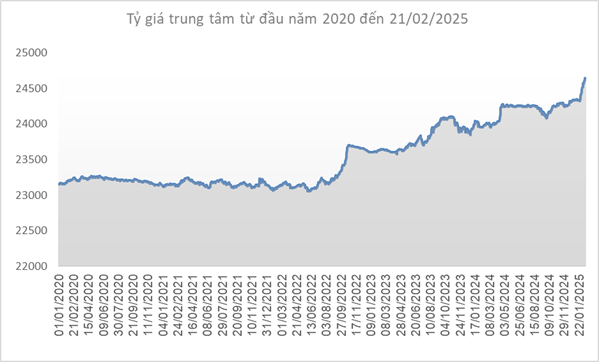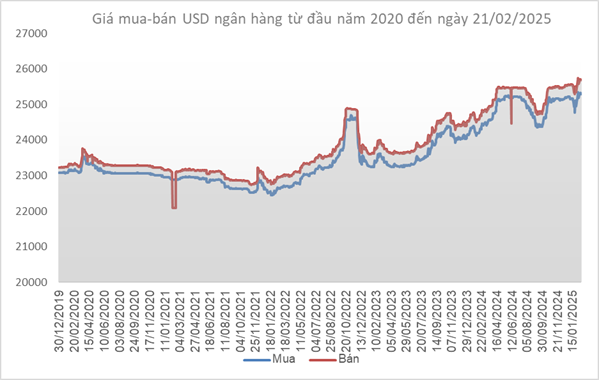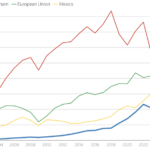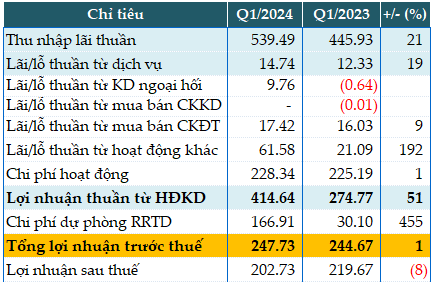In the international market, USD prices fell for the second consecutive week, with the DXY index down 0.15 points from the previous week (February 14) to 106.64 points (February 21).
The USD continued to weaken as concerns grew over the potential negative impact of President Trump’s tariff threats on the US economic outlook.
President Donald Trump has revealed plans to impose a 25% tariff on imports of cars, semiconductors, and pharmaceuticals, with an official announcement expected in early April. If implemented, the new tariffs would expand the President’s trade war.
Previously, Trump imposed a new 10% tariff on all imports from China (effective February 4, 2025) and announced a 25% tariff on steel and aluminum imports globally (effective March 2025).
On the other hand, US data showed that the consumer price index (CPI) in January 2025 rose at the fastest monthly pace since August 2023, pushing annual inflation to 3%.
According to experts, US inflation persists while tariffs are likely to slow the economy by becoming a form of tax on consumers, putting pressure on business profits and economic growth.

Source: SBV
|
In Vietnam, the central exchange rate of the Vietnamese Dong to USD increased by 76 VND/USD compared to the previous week (February 14) to 24,638 VND/USD on February 21, 2025.
With a 5% margin, the allowable trading range for commercial banks is now between 23,406 and 25,870 VND/USD.
The State Bank of Vietnam’s Foreign Exchange Reserve Management Department sets the USD/VND reference exchange rate at 23,457-25,819 VND/USD (buy-sell).

Source: VCB
|
At Vietcombank, the USD/VND exchange rate on February 21 was listed at 25,290-25,680 VND/USD (buy-sell), an increase of 100 VND/USD in both buying and selling prices.

Source: VietstockFinance
|
In the free market, the exchange rate increased by 20 VND/USD in both buying and selling prices compared to the previous week, reaching 25,670-25,770 VND/USD (buy-sell).
– 17:00 23/02/2025
The Soaring US Trade Deficit
The surge in the trade deficit in December could bolster the case for Trump 2.0’s protectionist policies. With a widening gap between imports and exports, the data highlights a potential vulnerability in the nation’s economic health, providing ammunition to those advocating for a more guarded approach to international trade.
Inflation Management Must Stay Grounded in Reality from the Start
In 2024, the consumer price index (CPI) rose by an average of 3.63% compared to 2023, remaining below the target set by the National Assembly. This marks a decade of Vietnam’s successful inflation control, with an average rate below 4%. Experts suggest that maintaining a CPI increase of around 4.5% in 2025 to support a substantial 8-10% growth will be a challenging task, requiring decisive and meticulous management from governing bodies from the get-go.
Unlocking Vietnam’s Economic Potential: Navigating the Path to 2025 with Optimism and Caution
According to the latest report by Standard Chartered Bank, Vietnam’s economy is projected to grow by 6.7% in 2025. With a forecasted growth of 7.5% in the first half and 6.1% in the latter half compared to the same period last year, this expansion is driven by robust business activity and sustained foreign investment.
The Art of Inflation: Unveiling January 2025’s CPI and Core Inflation Dance
Some localities adjusted healthcare service prices according to Circular No. 21/2024/TT-BYT, and there were increases in transportation and food prices due to higher travel and shopping demands during the Tet holiday. These were the main drivers of the 0.98% month-over-month rise in the consumer price index (CPI) for January 2025. Compared to January 2024, the CPI rose by 3.63%, while the core inflation rate for January 2025 increased by 3.07%.





















